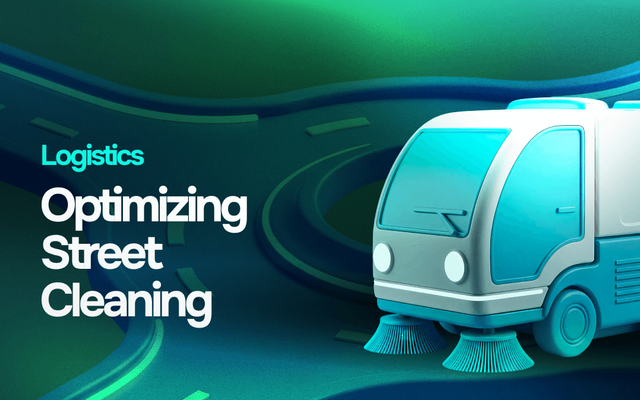
Software development is tough. You probably already know that if you're reading this. Projects go over budget, deadlines get missed, and sometimes what gets delivered barely resembles what was originally requested. Sound familiar?
Most of these problems aren't random disasters, though. They're predictable challenges that show up in project after project. The good news? Once you know what to watch for, you can actually do something about them before they derail your entire project.
Think of this as your early warning system. We're going to walk through the most common software development challenges that teams face and give you practical ways to handle them. No fluff, no theory - just real solutions that actually work in the trenches.
Common Software Development Challenges and Why They Occur
Every developer learns sooner or later that certain problems keep showing up no matter what project they're working on. These software development challenges aren't bugs in your code - they're built into how we work together, plan projects, and handle complexity. Let's break down the big ones so you can spot them coming.
Requirement Ambiguity and Scope Creep
You know that moment when a client says, "I need a simple app," and three months later they're asking for AI integration and blockchain features? That's scope creep in action, and it's probably the most common project killer out there.
Requirements problems usually start because:
Stakeholders don't really know what they want until they see it
Nobody writes down the actual decisions that get made in meetings
"Simple" changes turn out to need major rewrites
Everyone assumes their version of "obvious" matches everyone else's
Pressure to start coding before requirements are really nailed down
By the time you realize requirements are fuzzy, you're already behind schedule and over budget. Research shows that 68% of IT projects fail due to poor requirements management, making this one of the most critical areas to get right from the start.

Communication Gaps within Teams and Stakeholders
Ever played telephone as a kid? Software projects can feel exactly like that game, except instead of laughing at the silly final message, you're staring at code that does the complete opposite of what was requested.
Communication breaks down in predictable ways:
Developers and stakeholders speak different languages (literally and figuratively)
Remote teams miss those quick hallway conversations that solve problems fast
Important decisions get made in side conversations that half the team never hears about
Technical constraints don't get explained in terms that non-technical people can understand
Everyone's too busy to properly document what they decided
The result? Developers build what they think was asked for, stakeholders get something completely different, and everyone ends up frustrated.
Technical Debt and Legacy Systems
Technical debt is like credit card debt for your codebase. Every shortcut you take to meet a deadline, every "we'll fix this later" comment, every quick hack that works but isn't pretty - it all adds up. And just like real debt, the interest keeps compounding.
Legacy systems are the gift that keeps on giving (headaches, that is). You inherit someone else's code that was written five years ago using technologies that were already outdated then. The original developers are long gone, documentation is either missing or misleading, and somehow this mess is running critical business functions.
This becomes one of the major challenges for software developers because you're stuck between needing to add new features and being afraid to touch anything that might break the whole system.
Resource Constraints and Skill Gaps
Consider this scenario: Your project needs someone who knows React Native, has experience with payment processing, understands iOS development, and can start tomorrow. Your budget is "reasonable" (translation: tight), and your timeline is "flexible" (translation: we needed this last week).
Resource problems show up as:
Not enough developers with the right skills
Budgets that were set before anyone really understood what needed to be built
Deadlines that assume everything will go perfectly
Team members learning technologies on the job while trying to meet production deadlines
Choosing between doing it right and doing it fast
The shortage of experienced developers is real - studies indicate that by 2026, there will be a shortage of 1.2 million software engineers globally, making skilled developers increasingly difficult to find and retain.
While entry-level developers are entering the market, the gap is most acute for senior developers who can architect complex systems, mentor junior team members, and make critical technical decisions under pressure.
Testing and Quality Assurance Issues
Testing is like flossing - everyone knows they should do it regularly, but when you're in a rush, it's the first thing that gets skipped. Then you end up with problems that could have been prevented with just a little consistent effort.
When testing gets shortchanged, problems multiply:
Bugs make it to production that could have been caught easily
Fixing issues after release costs way more than catching them early
User trust takes a hit when basic functionality doesn't work
Developers spend more time firefighting than building new features
Manual testing becomes a bottleneck that slows down every release
The challenge gets worse when teams don't have clear testing standards or when QA becomes an afterthought instead of being built into the development process from day one.
Project Management and Process Inefficiencies
Bad project management is like having a GPS that's constantly recalculating your route. You might eventually get where you're going, but you'll waste a lot of time and gas along the way.
Some teams swing too far toward heavy processes that slow everything down with meetings and paperwork. Others have no structure at all, leaving everyone to figure out priorities on their own. Neither approach works particularly well.
Poor planning shows up as unrealistic deadlines, unclear priorities, and that constant feeling that you're always behind. Teams end up in reactive mode, always putting out fires instead of preventing them in the first place.

Effective Solutions to Overcome Software Development Challenges
Alright, enough doom and gloom. The good news is that smart teams have figured out ways to handle these problems. These aren't theoretical solutions from some ivory tower - they're battle-tested approaches that real development teams use to keep their projects on track.
The key is being proactive instead of reactive. Instead of waiting for problems to explode in your face, you set up systems that catch issues early when they're still manageable.
Clear and Continuous Requirement Management
The best way to handle requirement problems is to get really good at nailing them down upfront. That means having structured conversations with stakeholders and writing everything down in terms that everyone can understand.
Effective requirement management includes:
Start with user stories that explain what people actually want to accomplish
Write acceptance criteria that spell out exactly what "done" looks like
Schedule regular requirement review sessions to catch changes early
Create a formal change request process that makes people think about the real cost of modifications
Include technical team members in requirement discussions so they can flag potential problems
When stakeholders understand that their "quick change" actually requires three weeks of work, they tend to make better decisions about what's really necessary.
Enhancing Communication and Collaboration
Good communication isn't magic - it's about creating the right structures and making sure important information doesn't fall through the cracks.
Set up regular check-ins like daily standups and sprint reviews where people can surface problems before they get big. Create shared spaces where decisions get documented so nobody has to rely on their memory of what was said in that meeting two weeks ago.
For distributed teams, this becomes even more important. You need to be extra deliberate about sharing context and making sure remote team members don't miss critical information. Sometimes that means over-communicating rather than assuming people will figure things out on their own.
Managing Technical Debt Proactively
Technical debt doesn't disappear on its own - you have to actively manage it. The trick is making debt reduction a regular part of your development process instead of treating it like a special project that never seems to get prioritized.
Smart teams allocate a percentage of each sprint to cleaning up code, refactoring messy sections, and updating documentation. They also do regular code reviews to catch quality issues before they become permanent parts of the codebase.
When dealing with legacy systems, create clear boundaries between old and new code. Build abstraction layers that let you add new features without having to understand or modify the scary legacy parts. Interestingly, technical debt costs organizations an average of $85 billion annually in the US alone, making proactive debt management a crucial business priority.
Investing in Talent and Training
You can't hire your way out of every skill gap, especially in today's competitive market. Sometimes you need to level up the team you already have.
Create learning paths for critical technologies and give people time to actually follow them. Pair experienced developers with those learning new skills - it's amazing how much faster people learn when they have someone to ask questions and review their work.
Cross-training helps reduce the risk of having critical knowledge locked up in one person's head. When multiple team members understand key system components, you're not stuck when someone goes on vacation or leaves the company.
Robust Testing and Quality Assurance Practices
Testing doesn't have to be painful if you build it into your development process from the start. Automated tests catch the obvious stuff so humans can focus on the tricky edge cases that require actual thinking.
Focus on the tests that give you the biggest bang for your buck:
Unit tests for critical business logic
Integration tests for system connections
End-to-end tests for the most important user workflows
Performance tests to catch slowdowns before users do
Test-driven development sounds like extra work, but it actually makes development faster because you catch problems immediately instead of hunting them down weeks later. Set up quality gates that prevent broken code from moving forward in your pipeline.
Streamlined Project Management and Agile Practices
Good project management is about finding the sweet spot between structure and flexibility. You need enough process to keep everyone aligned, but not so much that people spend more time managing the process than actually building software.
Agile practices work well when you adapt them to your specific situation instead of following them religiously. Regular retrospectives help teams identify what's working and what's not, so you can make adjustments as you go.
Clear milestones and transparent progress tracking help stakeholders understand where things stand without micromanaging the development team. When everyone can see progress and potential issues, they can make better decisions about priorities and resource allocation.
Building Resilience for Long-Term Success
The bottom line is that these challenges in software development are going to keep showing up. Technology changes, but human nature and project dynamics stay pretty much the same. The teams that succeed are the ones that build systems to handle these predictable problems instead of being surprised by them every time.
Good software development challenges and solutions work together. When you improve communication, requirements get clearer. When you manage technical debt, resources become more efficient. When you invest in testing, you spend less time fixing bugs and more time building features that users actually want.
The key is to regularly step back and look at how your team is doing. What's working? What's causing pain? Are you repeating the same mistakes on every project? Be honest about what needs to change, and then actually do something about it.
Success in software development isn't about being perfect - it's about building systems that help you recover quickly when things go wrong. Because they will go wrong. The question is whether you'll be ready for it.







